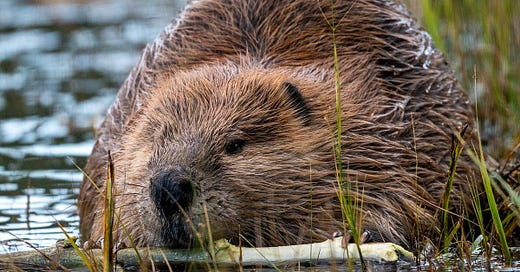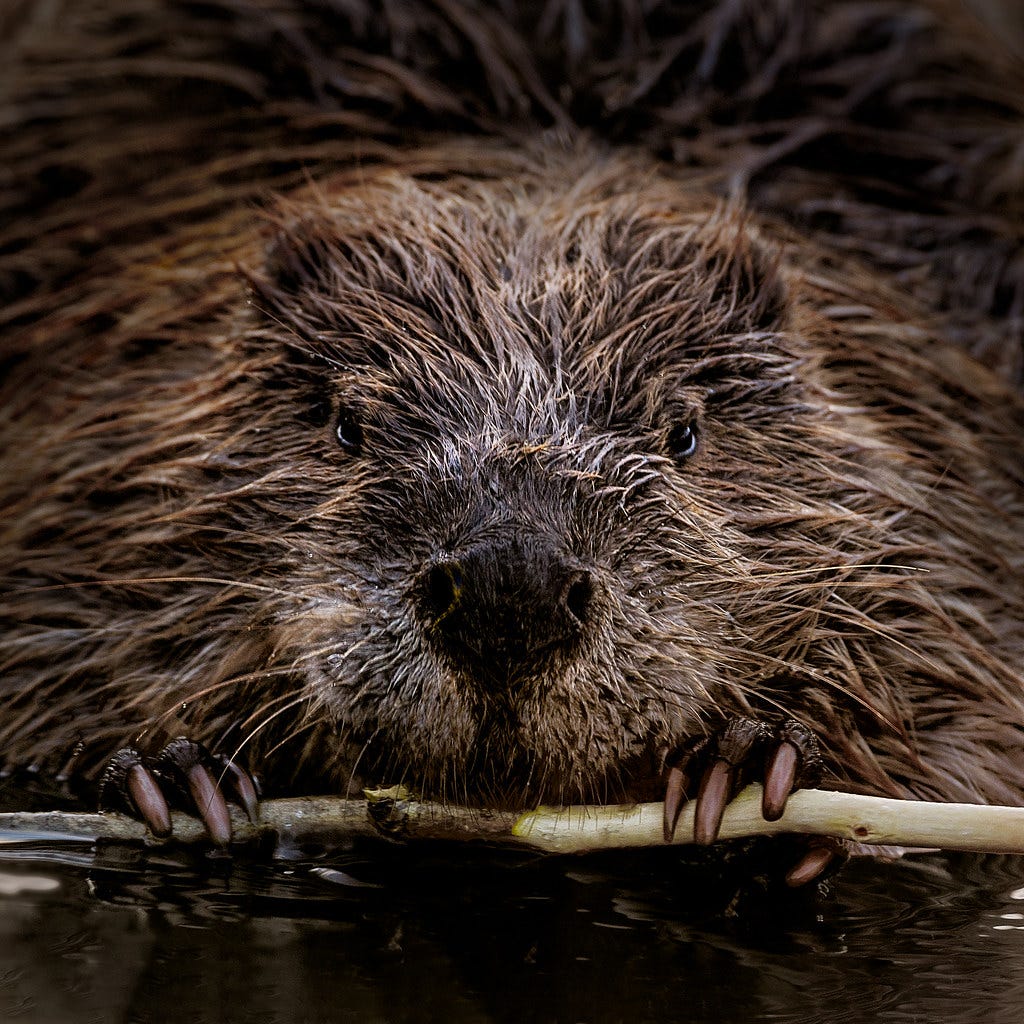Hello everyone:
The hearings for the Select Committee to Investigate the January 6th Attack on the Capitol of the United States began tonight. Whether or not we watch, their relevance here is their goal of stabilizing democracy here in the most powerful and influential country on Earth. Without at least a semblance of electoral stability and democratic norms, we risk more years of continued failure to meet the challenges of the climate and biodiversity crises. We can’t afford any more delay. The more chaos in government, the less effective it is. And we need an unusually efficient government to make and enforce policy that will help pull civilization back from the brink of several planetary boundaries. The committee can only have so much impact on public opinion, though. For those of you looking to advocate for sane and strong climate policies, for clear-headed environmental leadership, etc., the midterm elections in November must be free and fair and fully utilized by the electorate. Let’s hope the hearings nudge us in that direction.
As always, please remember to scroll past the end of the post to read this week’s curated Anthropocene news.
Now on to this week’s writing:
To understand this particular moment in the history of beaver-human relations, look no further than reports in recent years which suggest that Canada, whose national symbol is the beaver, is being invaded by them. “Nuisance” beavers are being killed in increasing numbers. Bounties are being offered. It’s as if the U.S. declared war on a scourge of bald eagles.
As I noted last week, the rebounding North American beaver population (up to 10 to 15 million from its catastrophic low of 100,000) is still a fraction of its pre-colonization population (60 to 400 million). Given the imprecision of those numbers, though, the fraction might be as high as a fourth or as low as a fortieth. That’s a range of 25% to 2.5%. Let’s keep it simple and imagine the current beaver population has rebounded to 10% of its historical norm. (This is the precise definition of “decimation,” by the way, to lose 90% of a previous population.)
At such a small proportion – a decimated remnant – it’s hard at first to understand what’s driving the “perception in several parts of Canada that beavers are invading,” according to a 2017 Macleans article, which also cites the Winnipeg Free Press describing beavers as “wreaking havoc in parts of Manitoba on a scale not seen in a lifetime.” Why, as the New York Times put it last year, are beavers “now viewed by many as a problem, not a point of national pride?”
The easy answer is that beavers are occasionally flooding yards and ranches and roads, cutting down trees that people don’t want cut down, and on rare occasions biting dogs, stealing fence posts, or chewing through fiber optic cables. As they increase their numbers, they are interacting with our world.
The tougher answer has to do with our ecological amnesia. The “lifetime” referred to in the Winnipeg Free Press, not to mention the several lifetimes before it, were accompanied by the near-extinction of this keystone species. For a few hundred years we didn’t live alongside beavers. Only now has the beavers’ recovery become visible across the landscape, but that landscape is one that we, in the absence of these furry landscape engineers, have modified for our own purposes. One of the many things we’ve forgotten is that much of our infrastructure, especially our mill towns and farms, were built on the rich bottomlands that beavers created.
For a rare glimpse into the once-common grand scale of beaver-enriched landscapes, consider the longest beaver dam in the world, according to Guinness. It is more than a half-mile long, and is the work of generations of beavers going back to the 1970s. It was hidden until recent years in the remote wilds of Wood Buffalo National Park in northern Alberta.
Which brings me to what I think is the deeper answer. We’ve made a colonial claim to every inch of the Earth, from sea to shining sea, but beavers compete with us for space in the landscape in a way that no other species does. After all, what other species would generate such widespread angst at a mere 10% of its original population? Only the large predators – grizzlies, wolves, mountain lions – have that effect, which is why we nearly exterminated them. We fear even the idea of a predator, and so we invented the firepower to act on our fear of death with exterminating force. But even in their heyday those large predators had relatively small populations that dominated the food chain, not the landscape. (Wolves were once a major predator of beavers.) I think our violence toward these bucktoothed herbivores is even more irrational than our outsized fear of wolves and lions and bears. Beavers threaten property rather than human life, and yet our response is to consider property as sacred and these vital animals as sacrificial.
Given free rein, beavers shape ecosystems. So do we, but we are bulldozers where beavers are gardeners. How do bulldozers and gardeners coexist? Perhaps side-by-side, but beavers aren’t going to be the ones who compromise. We have to rethink the relationship from our side. Canadian ecologist Glynnis Hood, author of the 2011 book, The Beaver Manifesto, described the clash this way:
It is one of the few species that refuses to play by our rules and continues to modify environments to meet its own needs and the betterment of so many other species, while at the same time showing humans that complete dominion over nature is not necessarily achievable.
(As an aside, I have to note that Hood has one of the best sentences I’ve ever read in an author’s bio: “She has always loved critters with eyelashes.”)
Hood offered a reality check in a 2021 Guardian article about the “growing friction” between Canadian communities and beavers. From the perspective of other species, human development has metastasized across the continent, and where our homes, roads, farms, towns, ranches, and businesses have been placed near streams or wetlands, we’re going to bump into the infrastructure that beavers are rebuilding for themselves and the myriad of species they support. They were here first, and now they’re moving back in.
Beavers maintained a damp empire for untold millennia – imagine much of North America as wetlands and swampy meadows – and now they’re simply trying to do it again as their numbers rebound. We’re in their way.
“There’s too much weight sometimes put on the beavers, but they’re really just reacting to how we change environments,” said Hood. “Where we place our development matters. And how we envision nature interacting with our built structures also has to come into play when we design them.”
So we’re killing them in increasing numbers. The Guardian reported that Grenville-sur-la-Rouge, in Quebec, “has called for its entire beaver population of nearly 800 to be eradicated, after 200 dams on nearby waterways put more than 30 sq km of the town underwater – a recurring problem that requires hundreds of thousands of dollars each year to fix.” Towns across Canada are less strident than Grenville-sur-la-Rouge, perhaps, but no less aggravated. Farmland and forest is underwater. Millions are being spent annually to rebuild roads, tear down dams, relocate beavers, or to kill them outright.
I haven’t found good data on how many beavers are killed annually in Canada, though for perspective nearly 40,000 were killed in Saskatchewan in 2014. Here in the U.S., thanks to very thorough record-keeping by U.S. Wildlife Services, I learned that nearly 25,000 beavers were killed in 2021. (This data from U.S. Wildlife Services – an ironic name – deserves an essay or two on its own, but if you’d like to see the hundreds of species that make up the 1.7 million animals killed by federal employees or contractors last year, click on the link above and then scroll down to the last report, “Animals Dispersed / Killed or Euthanized / Removed or Destroyed / Freed or Relocated,” and click on it.)
To be clear, this killing of beavers is not a replay of the first few centuries of colonial expansion and slaughter, which especially in Canada was driven by the trade in beaver fur. But a colonial economy built around the harvesting and shipping of beaver skins to supply a European fashion trend is not entirely different from killing tens of thousands of beavers in the 21st century because we’re neither smart nor foresighted enough to support the ecologically necessary population increase in a keystone species. The tenets of human supremacy – the world belongs to us, all other species are resources for us, etc. – lie behind both our historical and current attitude toward beavers.
We need to do much, much better. And we can. There are good solutions for most conflicts with beavers. Coexistence is possible, with a little creativity, patience, and effort. Where beavers have dammed culverts, for example, they can be tricked into maintaining their dam at a lower level with devices like the Beaver Deceiver. Skip Lisle, the Beaver Deceiver inventor, has spent his life perfecting them, because he knows they’re an essential coexistence strategy. Killing beavers doesn’t work, says Lisle, because there are always more beavers ready to move in.
Humans often seem unable to recognize good long-term economics, especially when there’s a weapon handy. With guns and traps allowing for a “free,” short-term remedy, people often develop a false sense of security. They forget that the dead beavers are not the only beavers.
Moreover, he says, there’s so much to gain from working with beavers:
Kill strategies also prevent beavers from building ecological wealth in the general area around the conflict point. Frequently, the culvert is the only thing threatened. Protect it, and beavers are free to go about their business of creating ecological and hydrological gold.
If necessary, beavers can be trapped and relocated to an area that needs rewilding but isn’t occupied by people. The Methow Beaver Project in Washington pioneered one of the most comprehensive programs on the continent. They offer a suite of services for landowners to manage beaver conflicts. If management doesn’t work, they are prepared to relocate beavers, but doing this successfully requires much more than simply moving them.
Beavers are family-oriented, with three generations often living together in a lodge. If single beavers are captured, they need a dating service to find a mate with whom they can be relocated to new territory. Ben Goldfarb’s great 2015 High Country News article called “The Beaver Whisperer” – which I mentioned last week – follows biologist Kent Woodruff and his colleagues as they facilitate beaver romance and then send the newly-wed pairs into the wilderness. (Goldfarb is the author of the excellent Eager: The Surprising, Secret Life of Beavers and Why They Matter.)
And then there’s a fun and thoughtful documentary called The Beaver Believers, highlighting Woodruff and other beaver rewilding enthusiasts working to use beavers to reduce the impacts of climate change across the West. Check out the Beaver Believer website and the filmmakers’ clips of beaver capture, releases, and profiles of these scientists loving the work they do. Here’s the trailer, in which Woodruff says “Let’s try to solve some important problems, one stick at a time.”
I have a bit more on beavers that I’ll save for next week, since today’s writing has grown a bit too long.
Thanks for sticking with me.
In other Anthropocene news:
From Grist, an article on how rapid action on the climate crisis will bring extraordinary global economic benefits, and how business-as-usual inaction may cost the global economy 178 trillion dollars.
From the Guardian, the cheapest energy is the energy we don’t use, so why aren’t we emphasizing energy efficiency?
From the Revelator, biodiversity solutions also fight climate change, so why aren’t we focused on those solutions which do both?
From Kathryn Schulz at the New Yorker, a brilliant long-form piece on the increasing loss of shipping containers overboard from ships, and what the entire shipping ecosystem teaches us about the wasteful world we’ve made.
Also via the New Yorker, a brief (13-minute) documentary on the “racist monument” and ecological disaster of border wall construction in the wilds of the U.S./Mexico border region.










Hi Jason, i love what i’m learning about beavers. great writing with such good information.